Latin name: Hyophorbe
Category: evergreen trees
Homeland: Mascarene Islands of the Indian Ocean
Hyophorba is an exotic tropical beauty in a bottle
The Palm family, according to the modern classification of plants, has placed on its territory a small genus Hyophorba, which includes five types of evergreen, perennial, tropical crops.
The homeland of this exclusive slow-growing palm tree is the Round Island. It belongs to the Mascarene Islands, which are washed by the Indian Ocean. This island is called Mauritius. It is considered the oldest island on which both legendary beaches and amazing and unique flora are located. The natural conditions of the tropical forests and sandbanks of the islands have become native to the hyophora, but the amount of the natural population is catastrophically decreasing, which threatens its disappearance.
South-East Asia, Australia, South and Central America, Africa are suitable for the cultivation of Hyophorba as a garden plant due to the climatic conditions. In countries where the temperate climate prevails, bottle palm trees are used to landscape and decorate office premises, shopping centers, conference halls, houses, greenhouses, gardens, boulevards, public squares, private plots. This unpretentious exotic decorative palm will be a decoration of any interior and any landscape, adding a bit of unusual tropical notes to this atmosphere.
Great geographical discoveries became a natural phase for Europeans to get to know hyophore, and it immediately became a very popular and beloved culture. The first name of the bottle palm is "mascarena", which indicates its origin. Another name can also be heard - the Moorish palm tree. The scientific name "hyophorba" of Greek origin has a not quite romantic translation and means "question for pigs." Indeed, local residents did not miss the opportunity to use the useful fruits of the plant to feed their pets.
In the wild, the bottle palm hyophore looks like a tall, slender fifteen-meter tree. It has a very beautiful spreading, shiny crown and a thin trunk slightly thickened in the middle, thanks to which it acquires the appearance of a bottle or spindle-shaped configuration, which resembles Greek vessels and vases with striking symmetry. Brownish-gray or gray, thick bark covers this original trunk.
The uniqueness and remarkableness of the Moorish palm lies in its structure. Young palms have the most unusual vascular trunk. More mature specimens have a more smooth thickening, which can be represented by a perfect cone.
The upper part of the trunk is decorated with large, two-meter, fan-shaped, pinnate leaves arranged in a spiral. And this beauty is presented on long reddish petioles with solid edges. Due to the original arc-shaped bend of the leaves, they become more imposing and charming. The leaves consist of a large number of smooth, leathery, lanceolate-linear segments with a shiny surface, the length of which is fifty centimeters.
During the flowering period, the hyophore palm is decorated with very small, goblet-shaped, whitish flowers, which are collected in complex, drooping, panicled inflorescences. The lower part of the crown is very convenient for their placement and the original hanging of these long aromatic bunches. Very charming flowers are represented by three whitish-green sepals and three pointed petals.
The culmination of the flowering of the beauty of hyophora is the appearance of its legendary fruits.
They have the appearance of fleshy round or egg-shaped five-centimeter berries. In the process of ripening, their color changes from salad to almost black. The Moorish palm practically does not bloom indoors.
Mascarena is famous for its powerful, superficial root system consisting of thick, fleshy roots.
Hyophorba palm is not against the neighborhood with such interesting exotics as bocarnea, pachypodium, milkweed, havortia, money tree.
If you believe feng shui specialists, then having such a tropical beauty in your home nest is only a joy. Its presence will help maintain the energy potential of the household at a high level, get rid of negative influences, raise the vital tone, become a more confident and advanced person.
Hyophorba bottle palm photo can be viewed and admired when viewing the next section.
Hyophorba species
Hyophorbe lagenicaulis
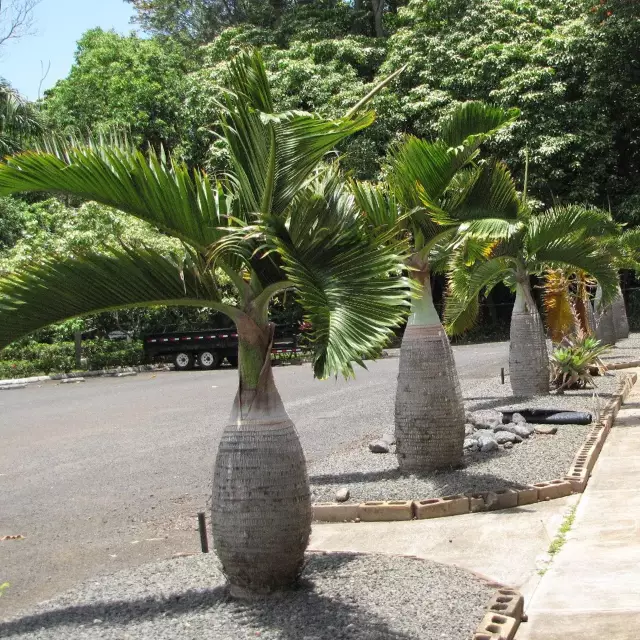 This slow-growing variety of hyophora considers the territory of the islands of Round and Mauritius to be its family. In the people, it is also called palm gargullet or bottle palm.
This slow-growing variety of hyophora considers the territory of the islands of Round and Mauritius to be its family. In the people, it is also called palm gargullet or bottle palm.
When meeting this unique tree, attention is first of all focused on the unusual bottle shape of the thick trunk, reaching a height of two meters. The thickness of the widest part is forty centimeters, and the narrowest part is about fifteen centimeters. This unusual vessel helps the plant collect and store liquid.
The top of the palm tree is decorated with up to six one-and-a-half meter pinnate leaves. Leaf plates are composed of forty-centimeter leaves-feathers. They rise on forty centimeter petioles. Young bottle palms have red and orange leaves, and with age they acquire a dark green color.
During the flowering period, a half-meter inflorescence of yellow or milky flowers appears from a narrow part of the trunk under the leafy crown. This beauty turns into useful and nutritious fruits of orange or black color.
Hyophorbe verschaffeltii
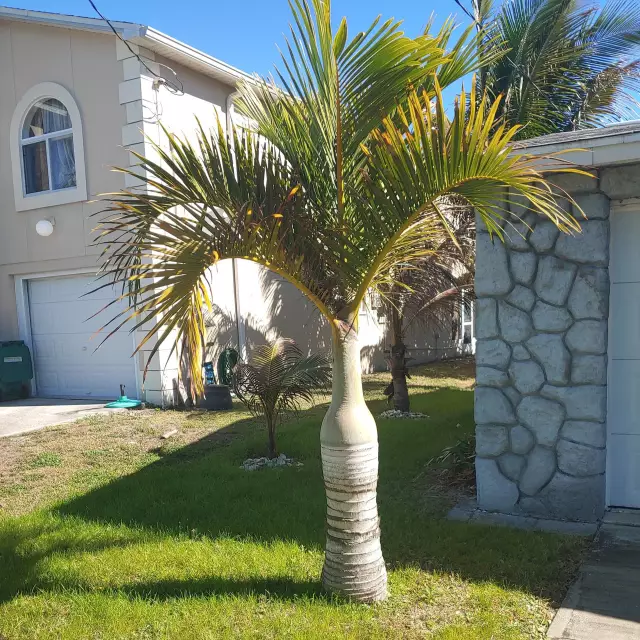 This slow-growing culture can reach an eight-meter height barrier in nature. Spindle palm is the popular name of this unique culture with an unusual spindle-shaped stem. On a short, seven-centimeter stalk, there are green, two-meter-long leaf plates, hard and feathery in structure with a pronounced central vein, composed of leaflets-feathers. Inflorescences of a branched form are composed of fragrant small flowers.
This slow-growing culture can reach an eight-meter height barrier in nature. Spindle palm is the popular name of this unique culture with an unusual spindle-shaped stem. On a short, seven-centimeter stalk, there are green, two-meter-long leaf plates, hard and feathery in structure with a pronounced central vein, composed of leaflets-feathers. Inflorescences of a branched form are composed of fragrant small flowers.
Hyophorbe Indica
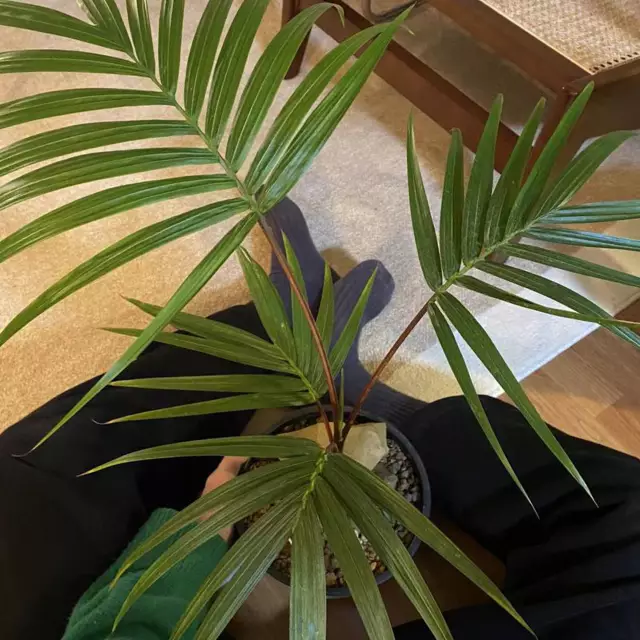 The humid forest massifs of Reunion Island with a height of up to six hundred meters relative to sea level are considered to be of the Indica hyophora family. This tall decorative palm tree can reach a height of ten meters. On the inflorescences of white and milky shades, four secondary branches are formed. Raduet with red-orange fruits. The species is subject to extinction.
The humid forest massifs of Reunion Island with a height of up to six hundred meters relative to sea level are considered to be of the Indica hyophora family. This tall decorative palm tree can reach a height of ten meters. On the inflorescences of white and milky shades, four secondary branches are formed. Raduet with red-orange fruits. The species is subject to extinction.
Hyophorbe vaughanii
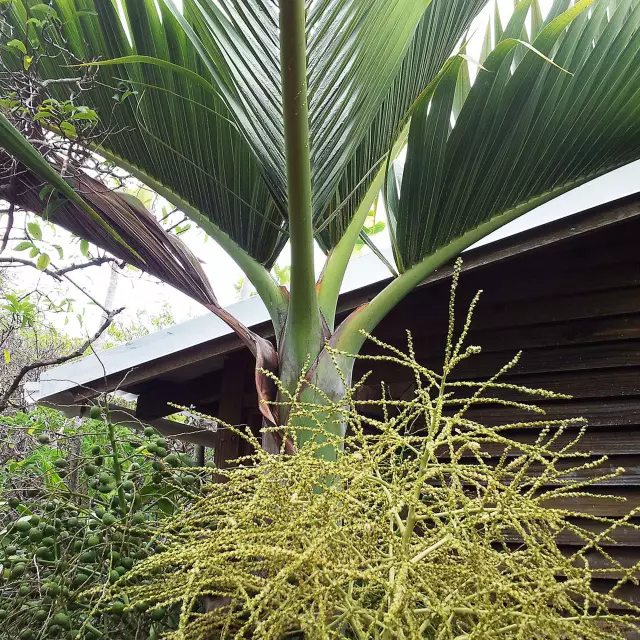 The island of Mauritius - native apartments inherited by this blooming palm tree. In the natural environment of forest territories with a subtropical and tropical climate, these leafy decorative plants feel great. The constituent parts of a thin, unexpanded barrel are rings, which differs in its structure from its relatives.
The island of Mauritius - native apartments inherited by this blooming palm tree. In the natural environment of forest territories with a subtropical and tropical climate, these leafy decorative plants feel great. The constituent parts of a thin, unexpanded barrel are rings, which differs in its structure from its relatives.
Leaf plates of bright orange color. Orange-yellow flowers are located on simple branching inflorescences. Then the tree is covered with five-centimeter orange or brownish-red fruits. It is quite difficult to germinate the fruits, so that this unique species of Moorish palm does not disappear, it was forbidden to cut it down and it was taken under strict control. Mauritians use the plant in the decoration of landscape design.
Hyophorbe amaricaulis
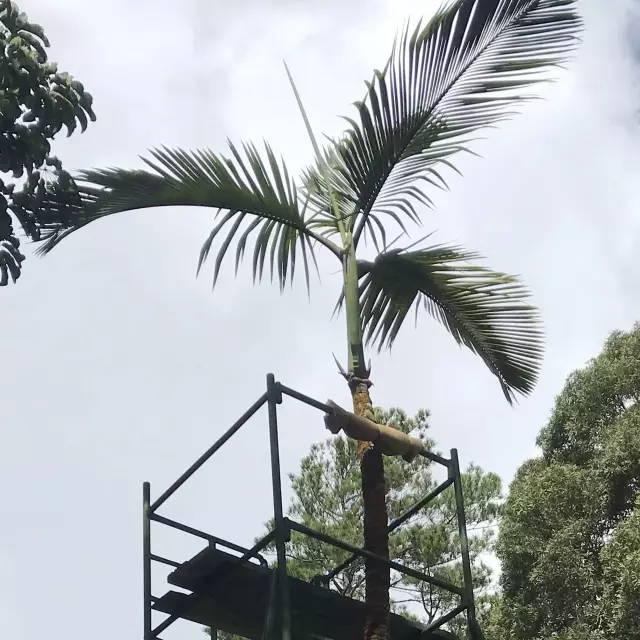 It represents a woody tropical culture. This unique plant was described in the year one thousand seven hundred. They call him the "lone palm tree" for the only person on the globe in this population. The location of this 50-year-old palm tree is a botanical garden in the city of Kurpip on the island of Mauritius. The tree was not imported to Europe. Attempts by botanists to obtain new young palm trees have not yet been successful.
It represents a woody tropical culture. This unique plant was described in the year one thousand seven hundred. They call him the "lone palm tree" for the only person on the globe in this population. The location of this 50-year-old palm tree is a botanical garden in the city of Kurpip on the island of Mauritius. The tree was not imported to Europe. Attempts by botanists to obtain new young palm trees have not yet been successful.
Hyophorba care at home
It is necessary to take care of the bottle hyophore in the conditions of the house, taking into account the parameters of growing a tropical culture. It is not at all difficult to fulfill these instructions. After all, the heat-loving and good light-loving hyoforba will easily adapt to home conditions.
The main thing is to provide your large indoor plant with heat during the cold winter, and to compensate for the lack of lighting with the help of artificial lighting. In gratitude for your attention and caring attitude, hyophorus will look charming in the interior.
Choice of place and temperature regime
Full shade is not suitable for the Moorish palm tree. Therefore, it will be more comfortable closer to the windows facing the east and west. In these areas, light perception will be bright, but scattered.
Bright, direct burning rays of the sun from the southern side must be shaded to prevent the formation of burns on the leaves.
Comfortable summer temperatures will be 20-26°C, and winter temperatures will be 16-18°C. Indoor hyoforba painfully tolerates low temperatures of less than 12°C. Indoor deciduous decorative palm tree constantly wants fresh air. It is desirable to air the area around the palm tree regularly and very carefully.
It is imperative to prevent drafts from reaching the Moorish palm.
It is necessary to protect the bottle palm from working air conditioners and heating devices. Otherwise, their action will affect the condition of the leaves in a serious negative way.
Air humidity and watering
In order for a tropical houseplant to fully develop and feel great, the humidity of the airspace must be at least 70%. This is easy to achieve if you regularly spray the palm with warm water, and also arrange for it to take a shower at intervals of thirty days. You can purchase flower pots with automatic watering or install a tray on which to place wet expanded clay, moss or pebbles. In winter conditions, these procedures can be neglected if the temperature in the room is low.
The main prerequisites for high-quality watering of room mascara are considered to be the dried upper part of the earthy coma in the flowerpot. After a couple of days, the flower must be watered. Throughout the year, the main thing is to control the condition of the soil - it should not be either too dry or too wet. Watering is carried out with slightly warm, soft, filtered water.
Soil and its top dressing
Soil mixture intended for palm trees is easy to purchase at a flower shop. For an inpidually prepared substrate, the following ingredients can be used: leaf and soddy soil should be two servings, and coarse sand one serving.
The spindle palm is fed in the spring and summer with an interval of fifteen days. For this procedure, special dressings intended for palm crops or a set of complex mineral fertilizers are used. In the summer, three or four times your bottle tree can be pampered with additional organic top dressing.
Giophorba transplant
A transplant for a hyophorbe palm is a painful procedure. For young plants up to the age of three, this process is performed in early spring annually or every other year. Older specimens disturb at intervals of five years. Mascarene is transplanted by transshipment.
The bottom of a stable flowerpot is covered with a good layer of drainage.
Giophorba palm breeding
It is not difficult to guess how giophorba reproduces. Getting a new young bottle palm is really only from seeds. For growing, the conditions of a mini-greenhouse are most suitable. Prepared seeds are sown in containers with good drainage, which contain moss or a mixture of sawdust and sand, charcoal can be added.
Temperature indicators should be kept at the level of 25-35 ° С. With good watering, the appearance of seedlings can be expected after two months. It is desirable to provide further cultivation of babies in greenhouse conditions without sudden temperature changes.
Pests and diseases of mascarene
Violation of the rules of maintenance can immediately be reflected in the appearance of uninvited guests on the mascarene palm, which can be scale insects and spider mites. To begin with, you can wipe the plant with a solution of soap, and then help her take a warm shower. If the results do not bring the proper benefit, it is necessary to switch to the use of insecticidal preparations - Aktellik, Aktara.
Difficult Growing Moments
- The ends of the leaf plates become dry - the irrigation regime is disturbed, the room is hot and the air humidity is low.
- The leaves turned yellow - the plant received too much top dressing with calcium impurities.
- The palm stalk softens, its lower part becomes wrinkled - Mascarena has too waterlogged soil, which led to rotting of the roots. Transplant immediately into a new pot with fresh potting mix.
- The gioforba bottle palm is an amazing beauty, pretty and moderately unpretentious. It is necessary to give her more care, love, attention, and with her appearance she will decorate the interior of your home and add notes of harmony and tranquility.
A large number of interesting plants can be found on the site by opening the catalog of indoor plants from a to z.




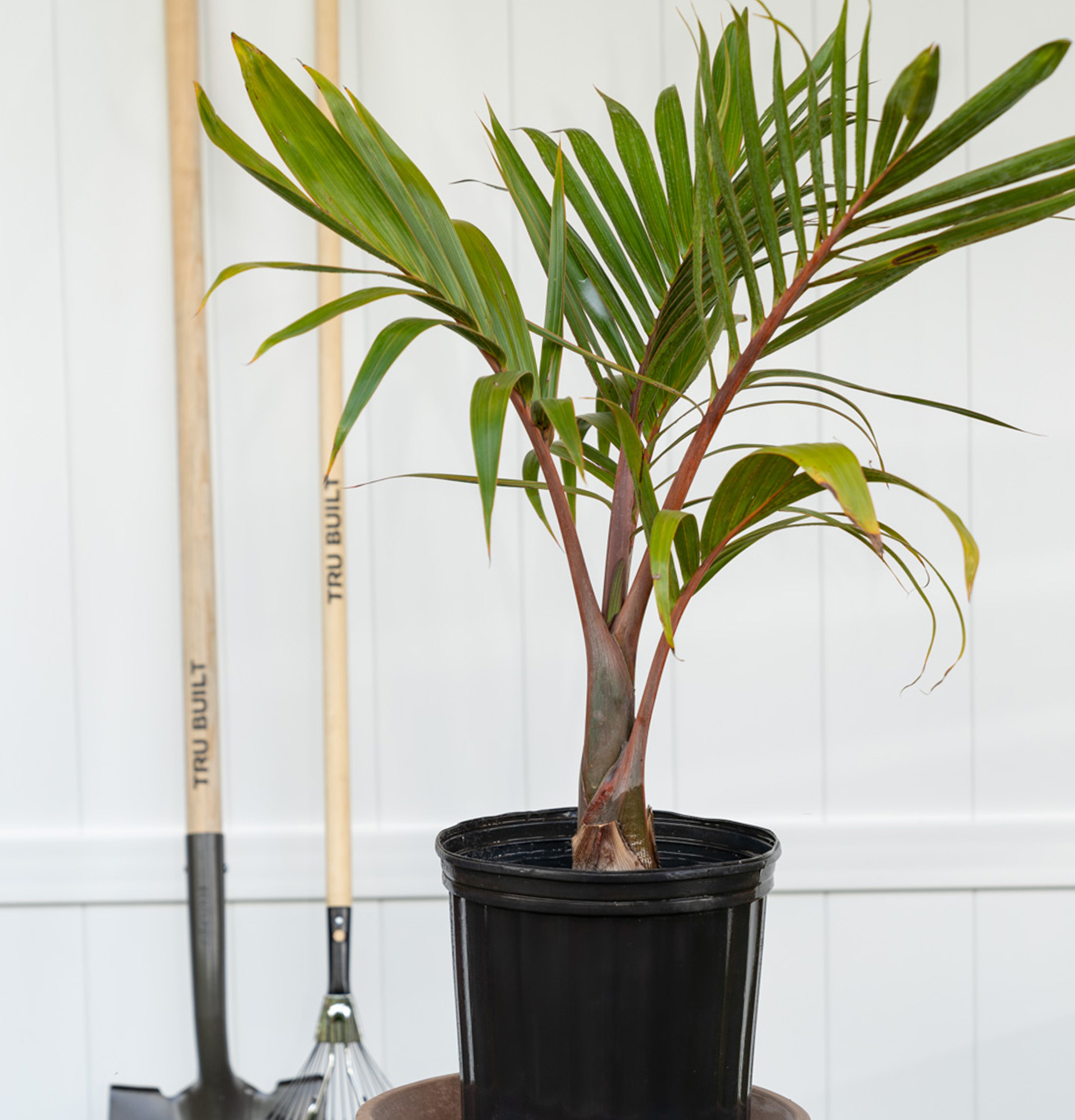











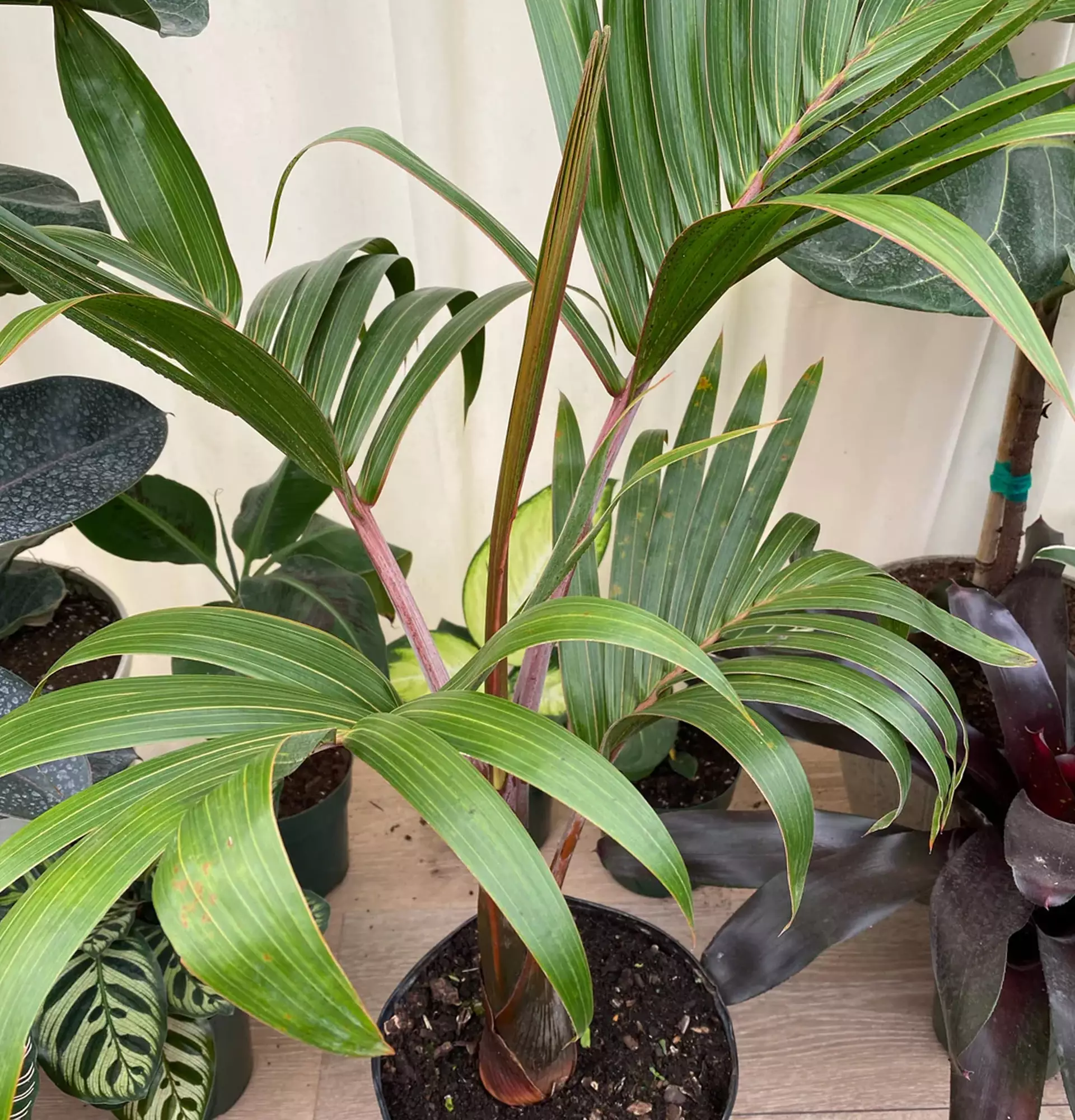
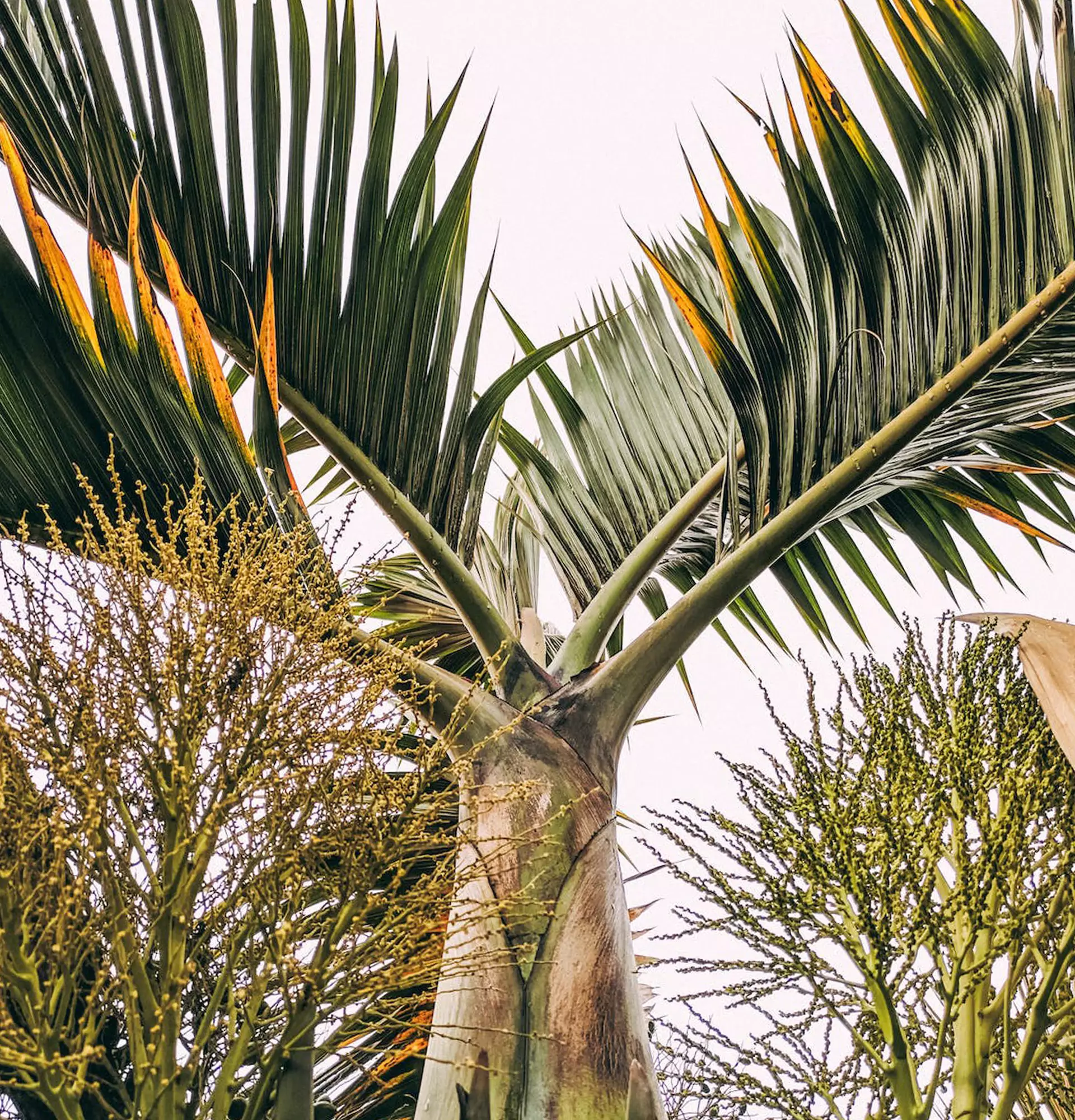
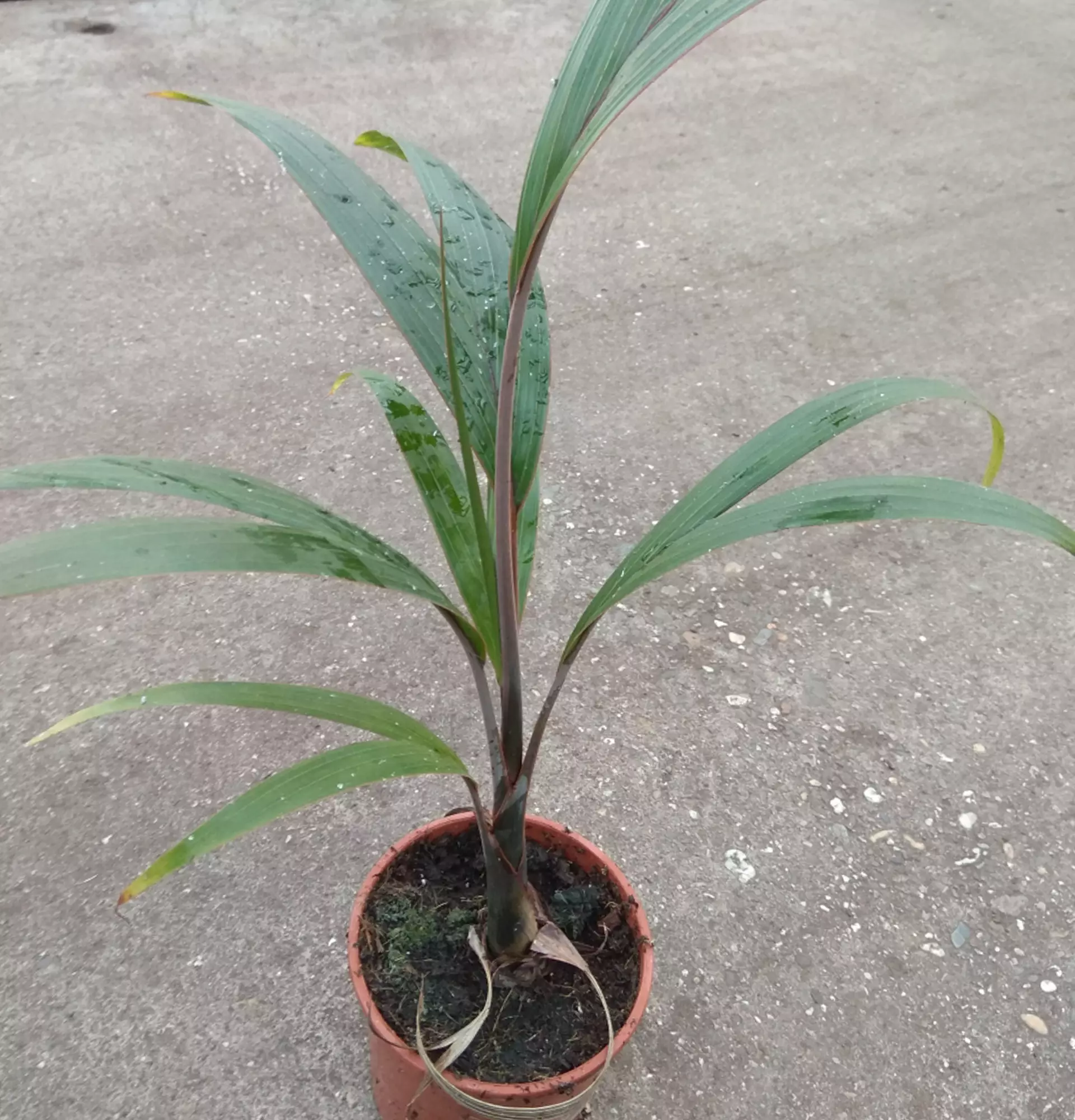
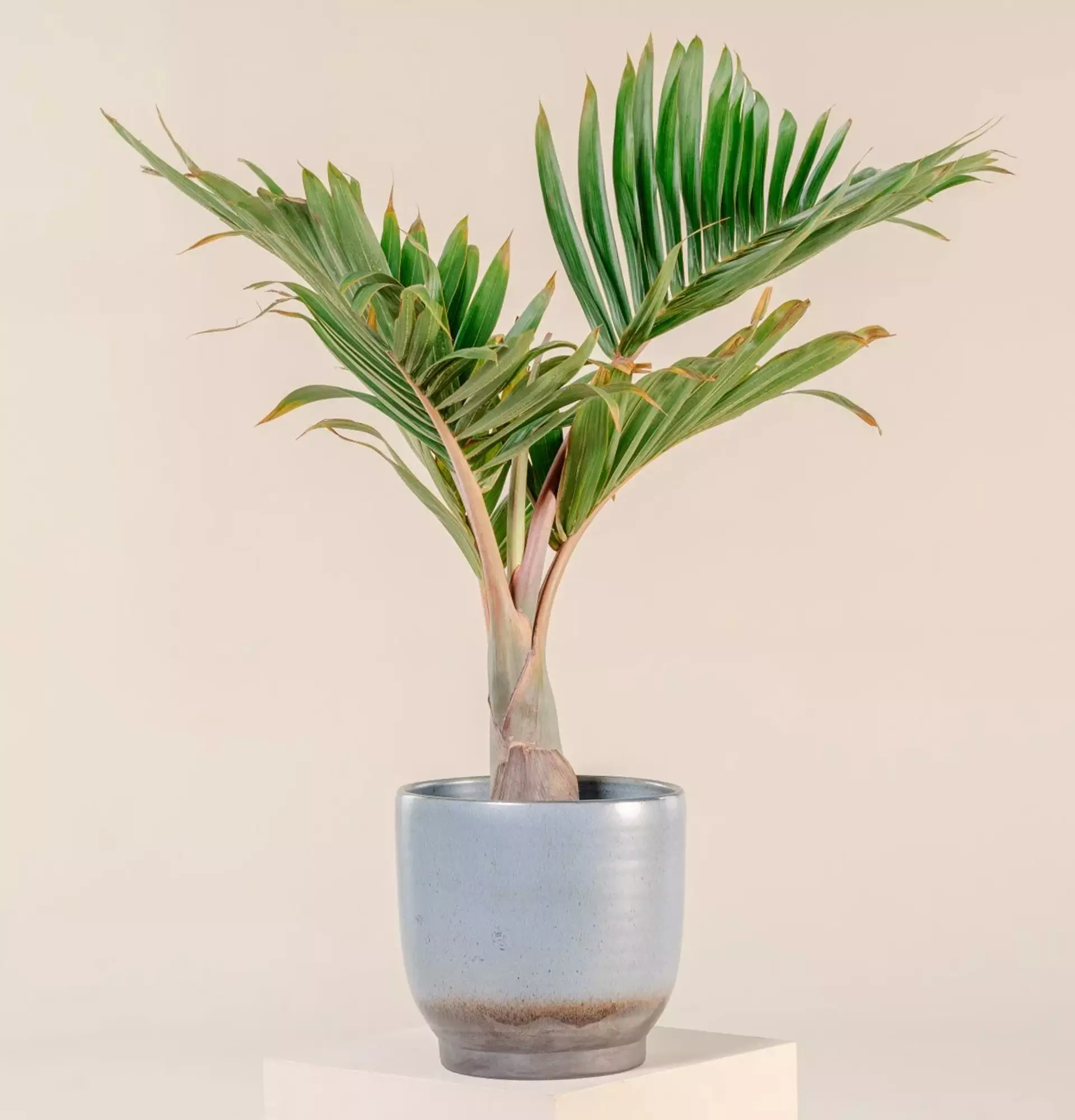
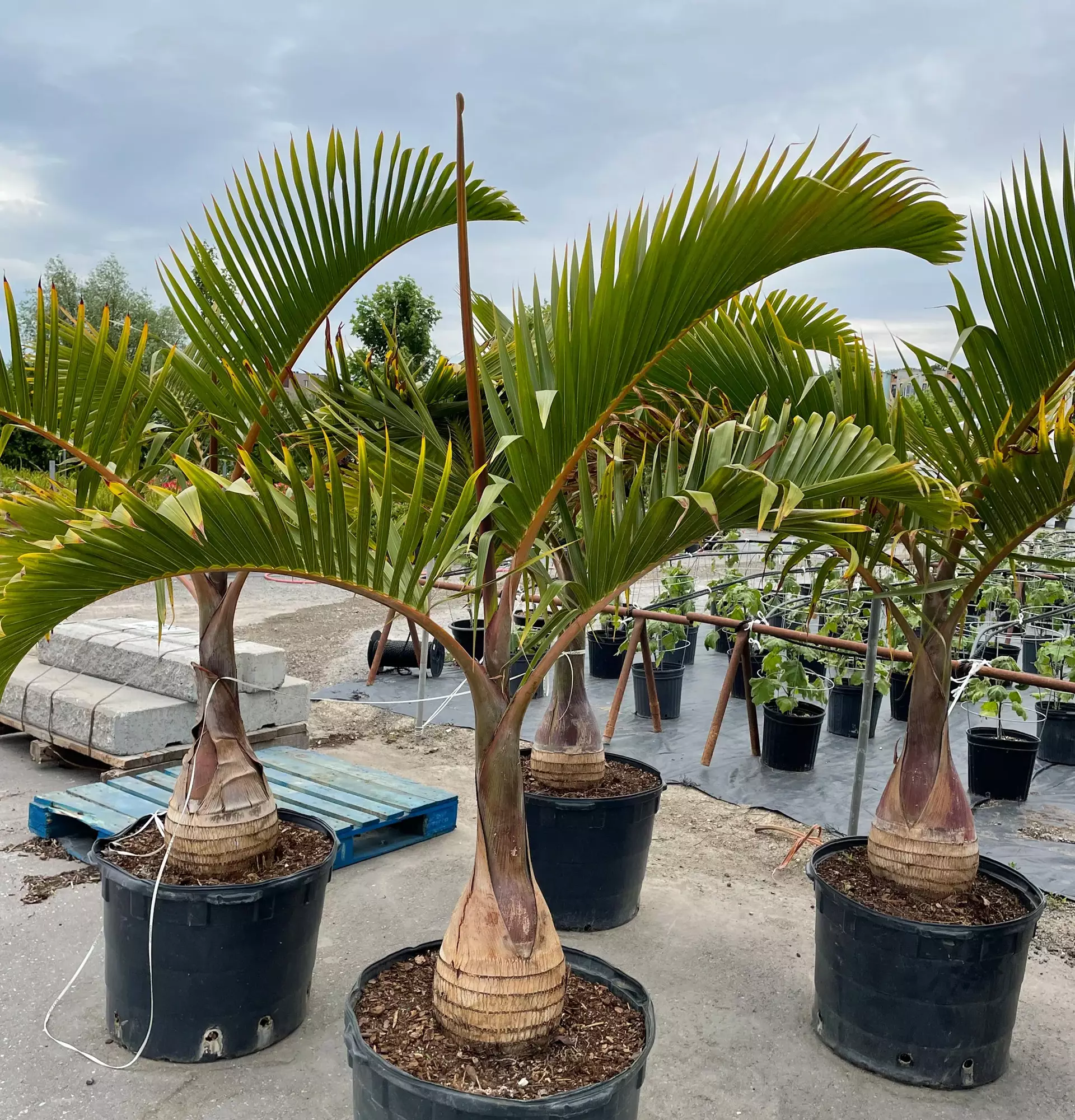
Write comments
Comments